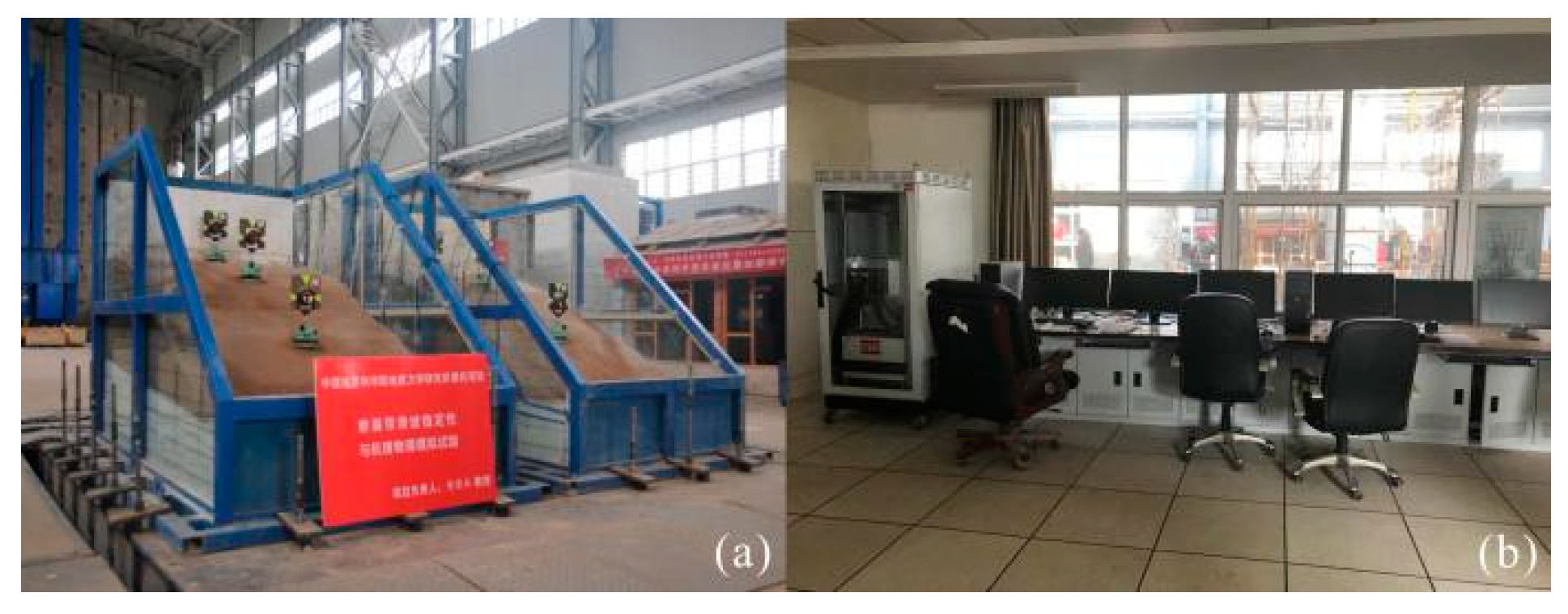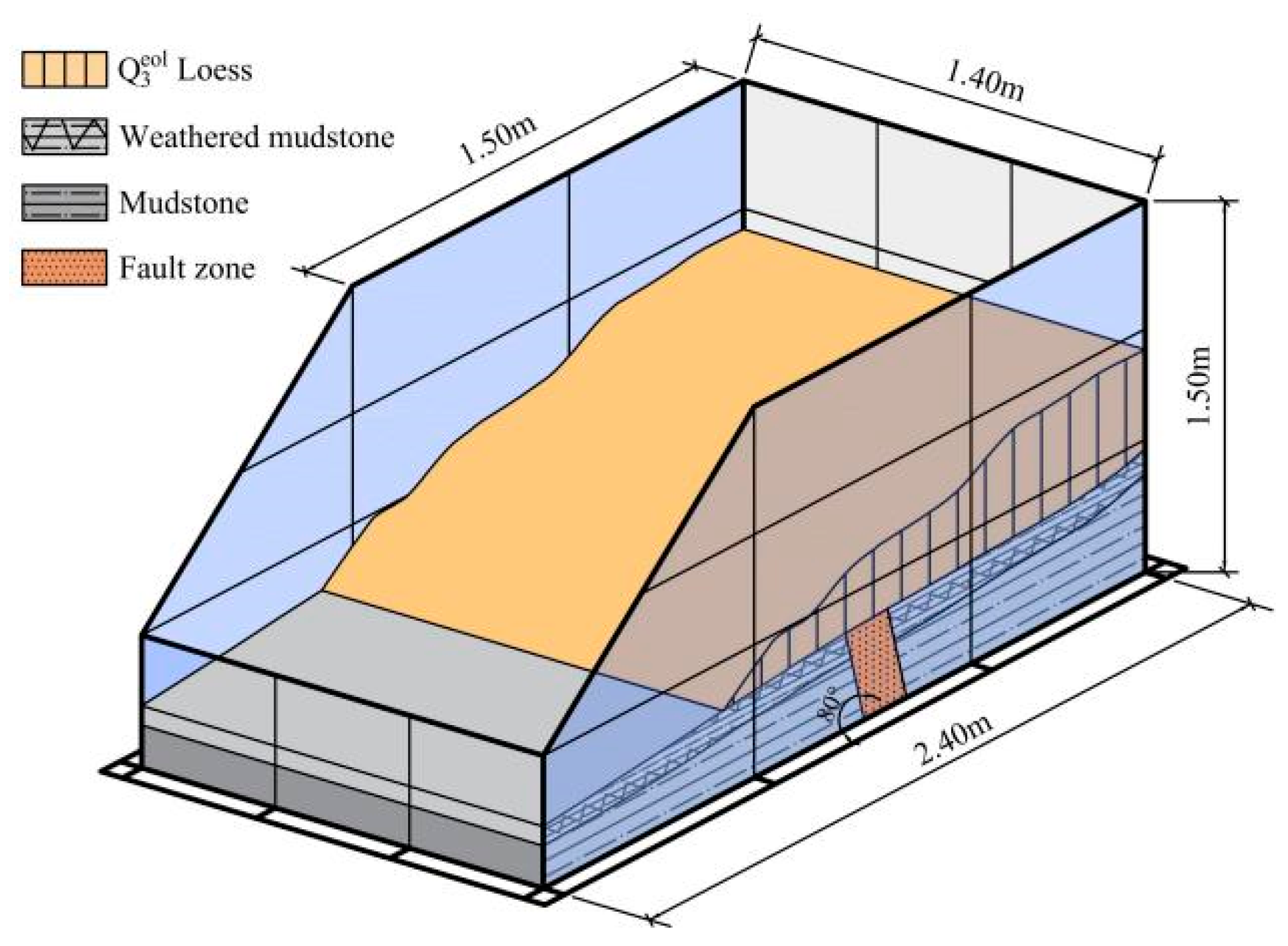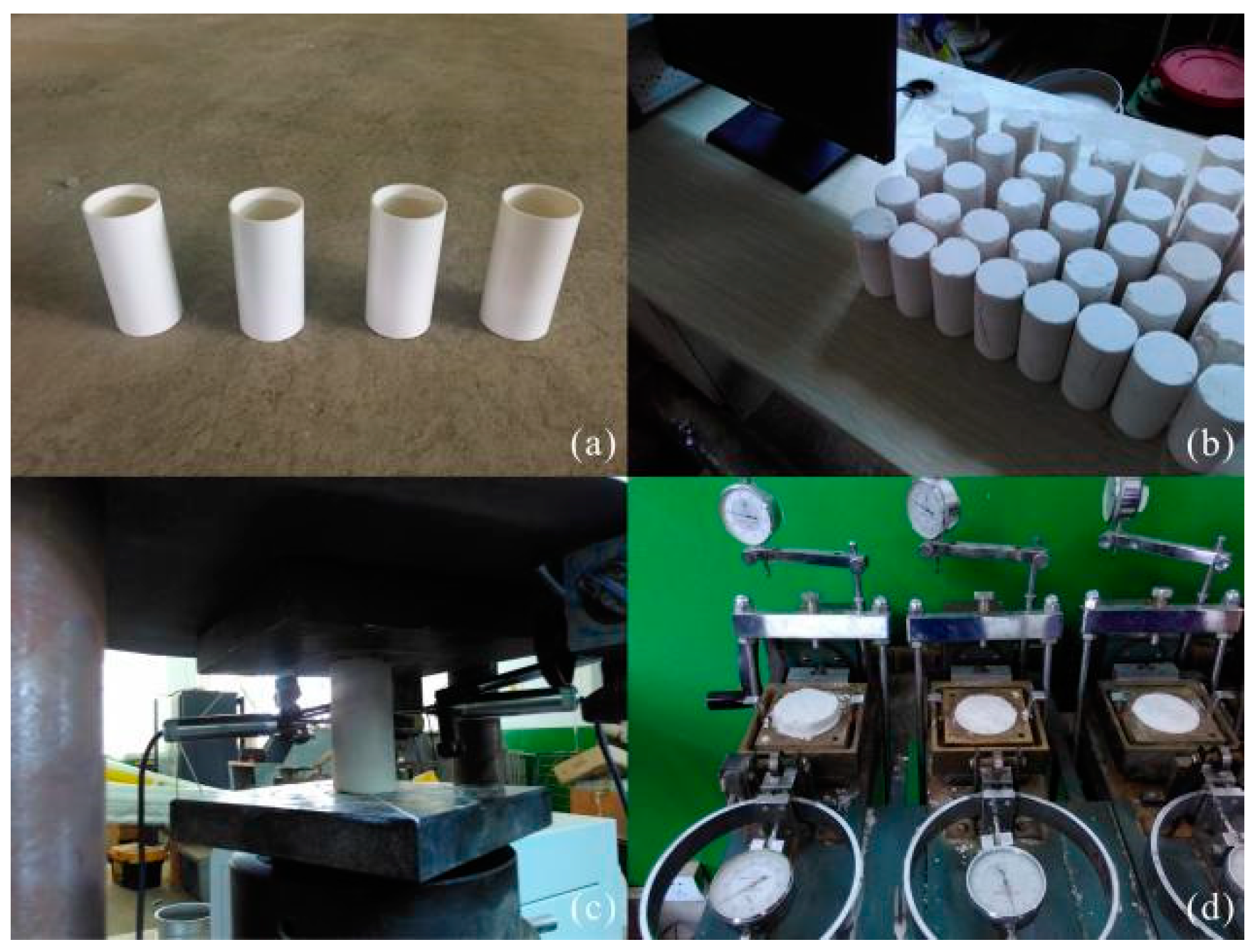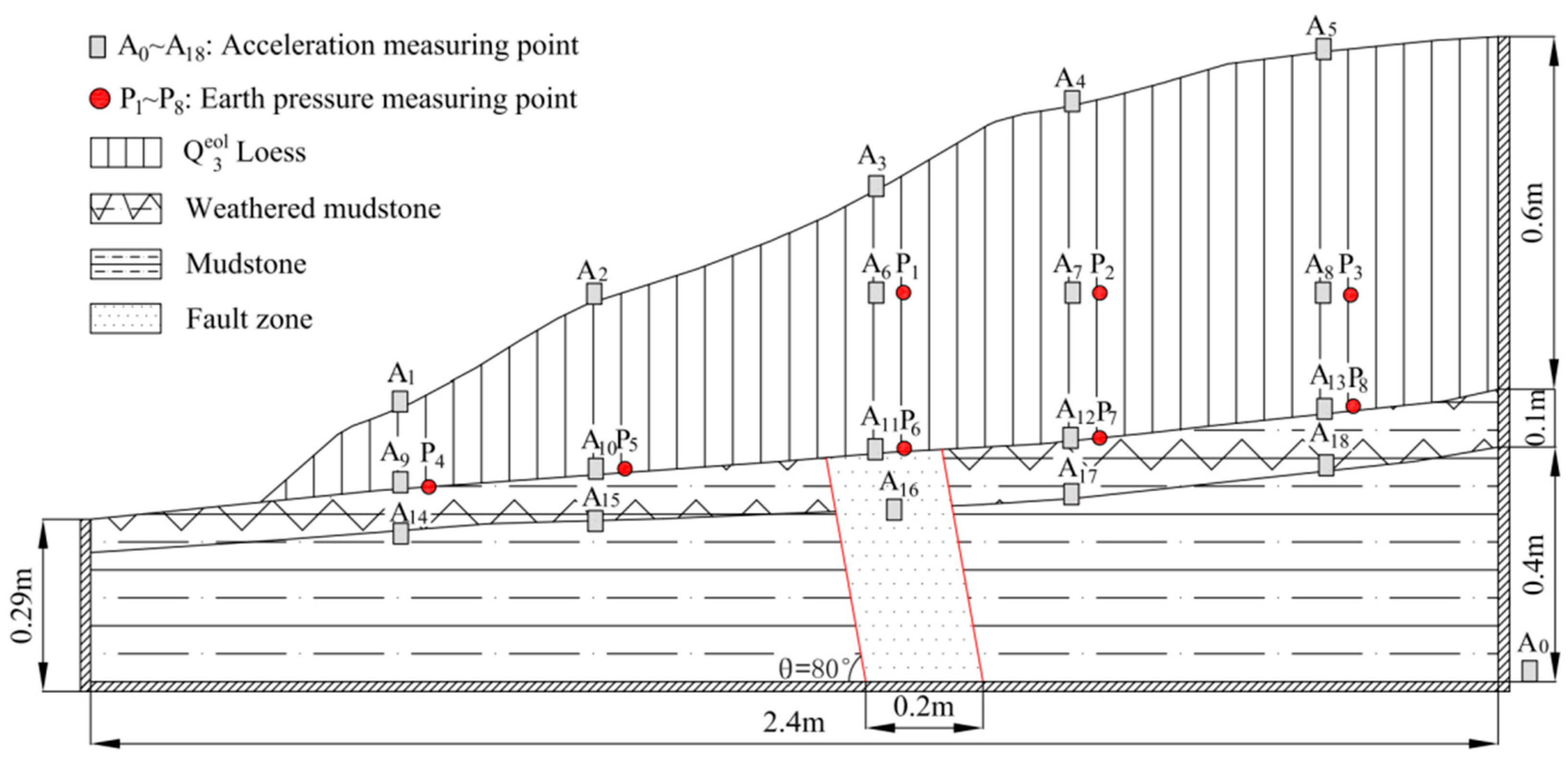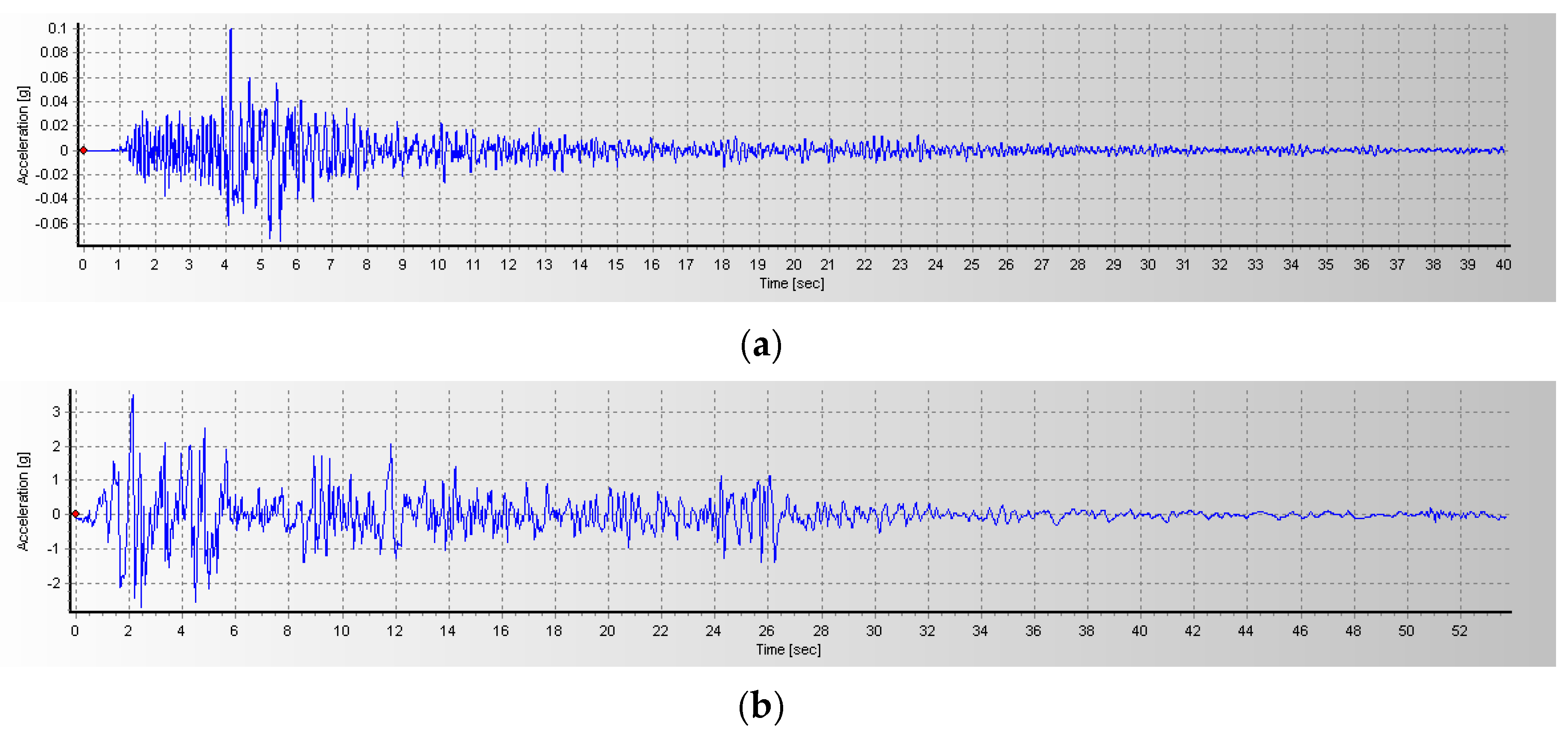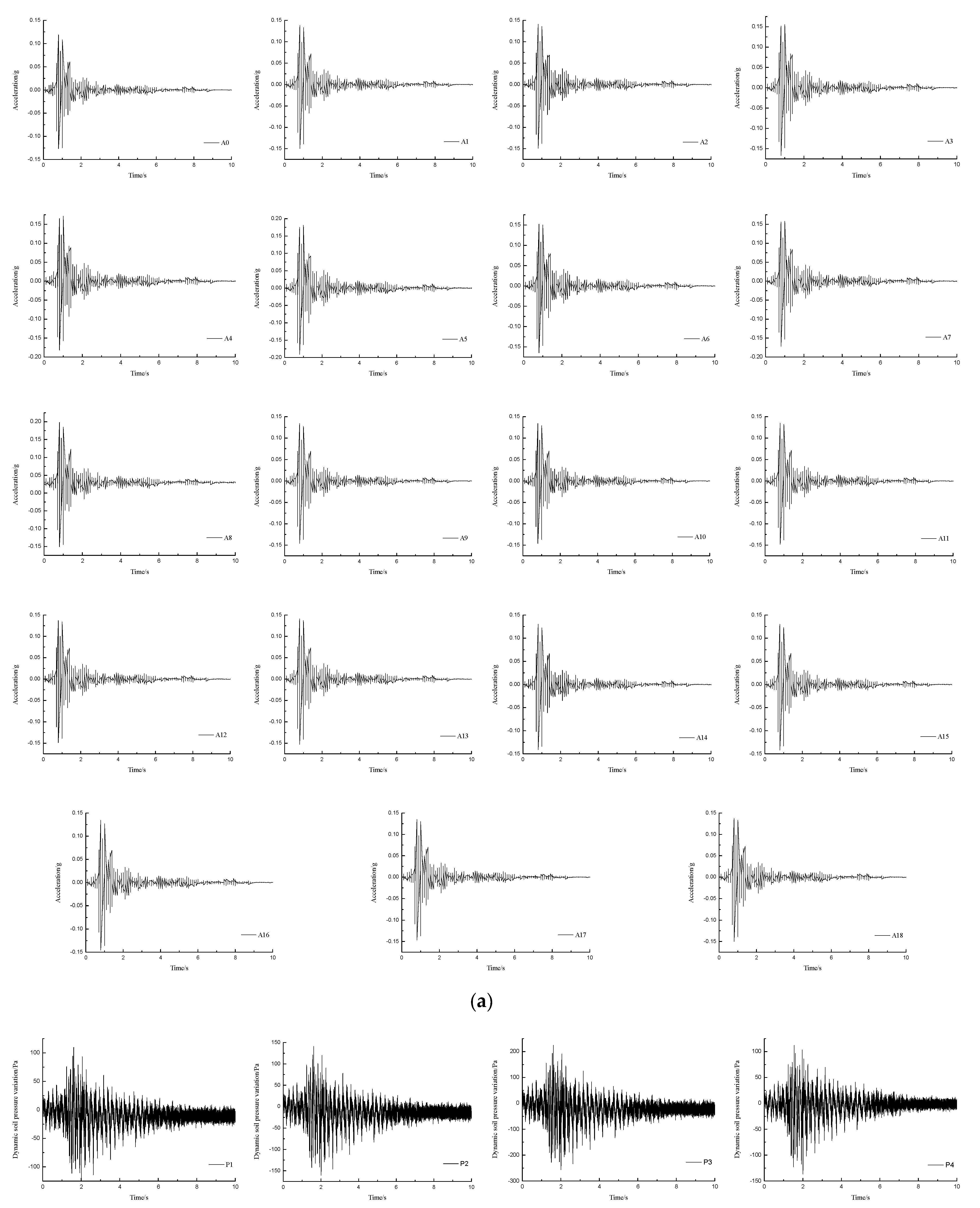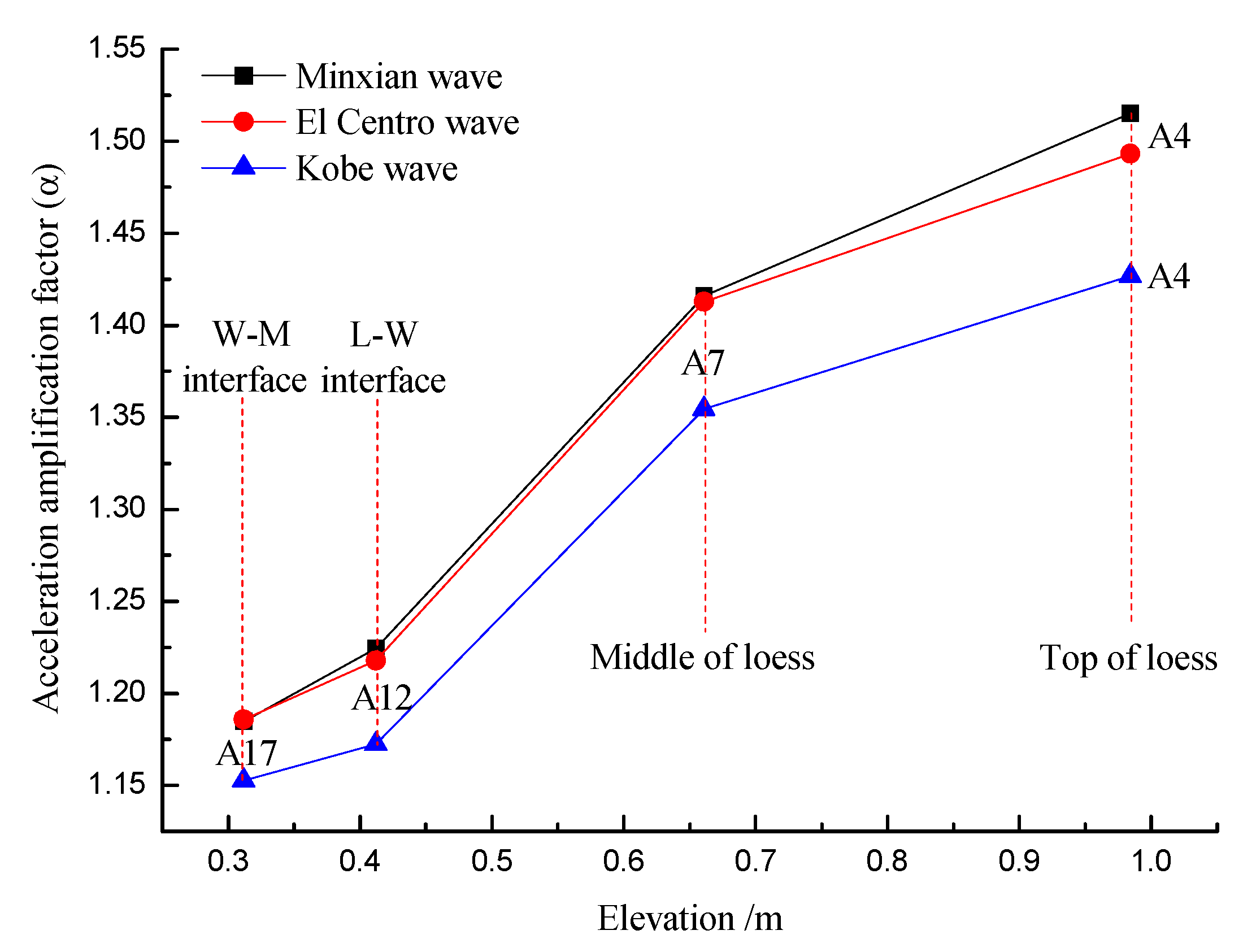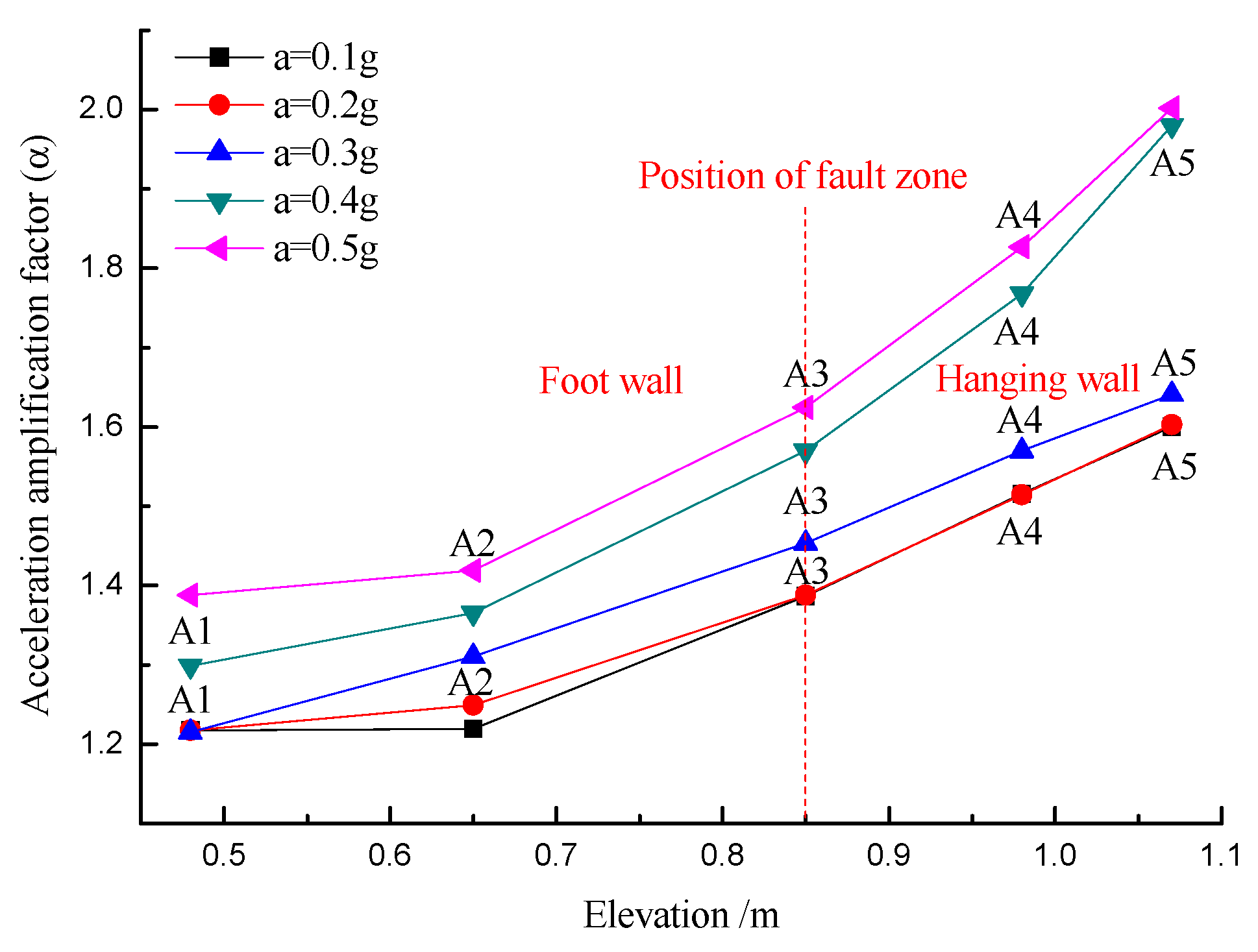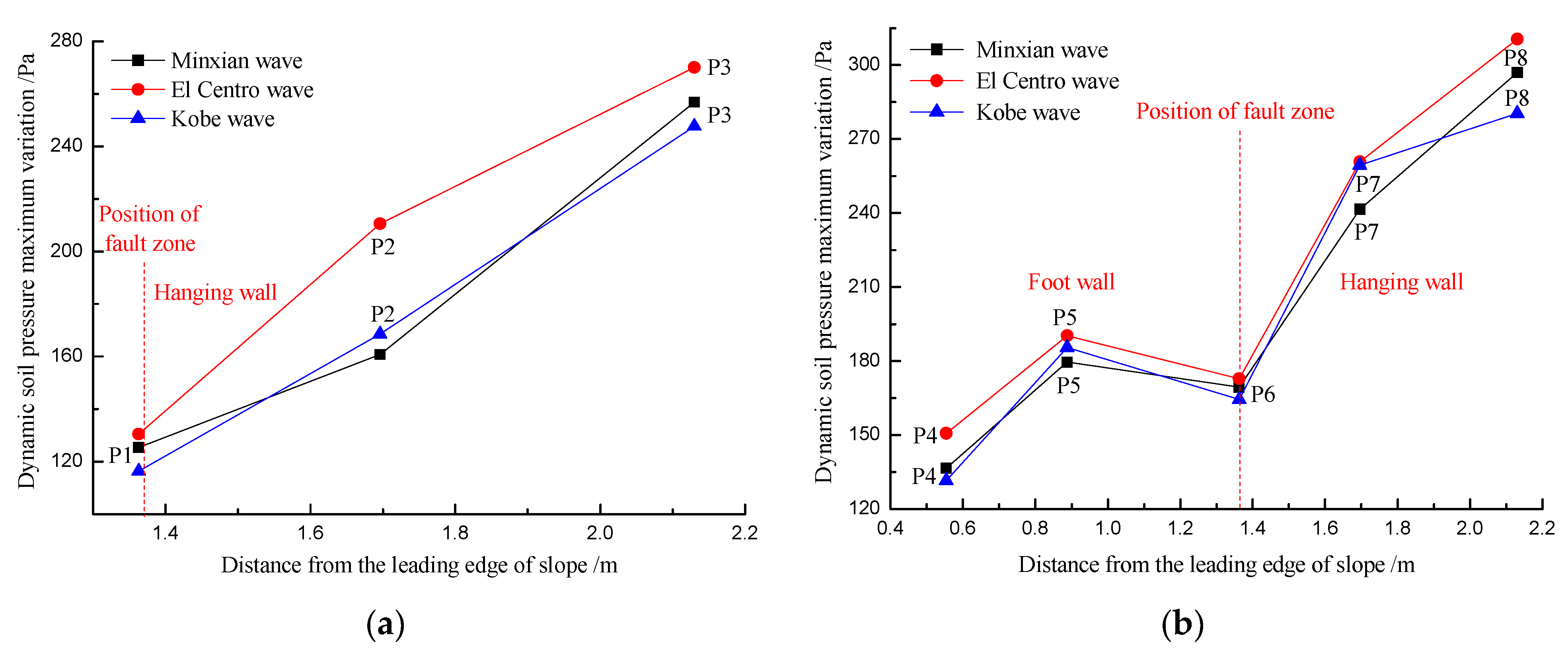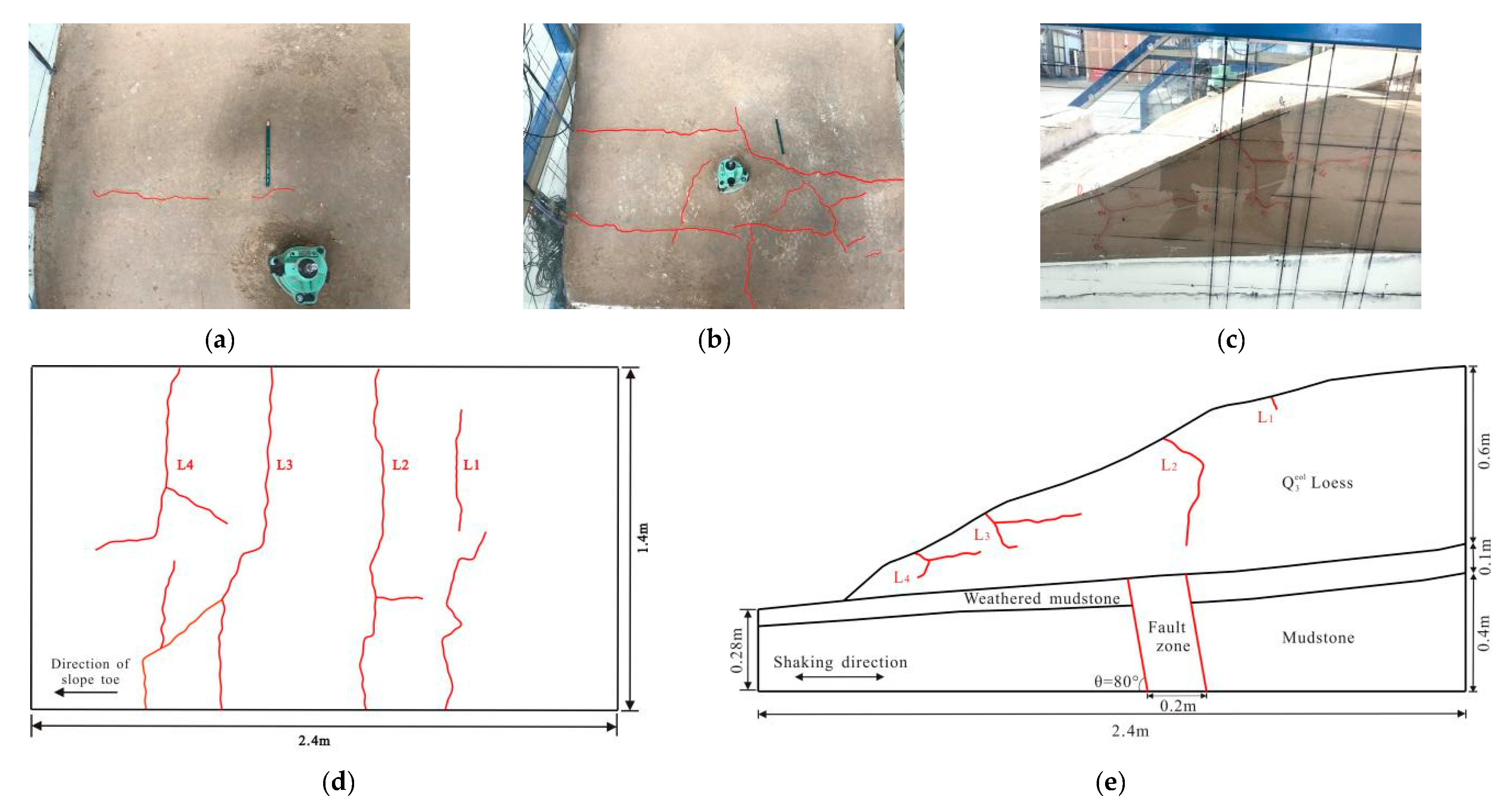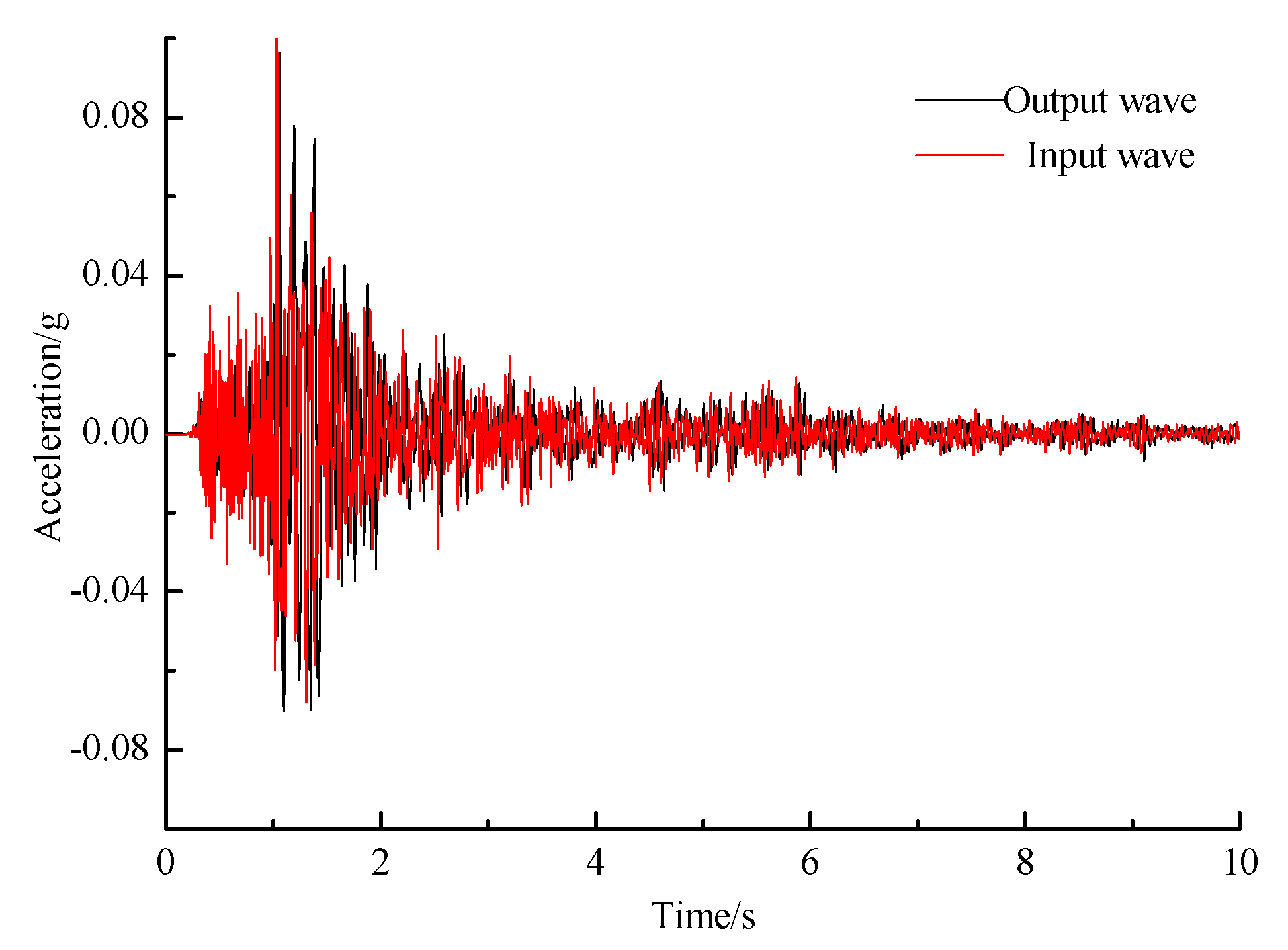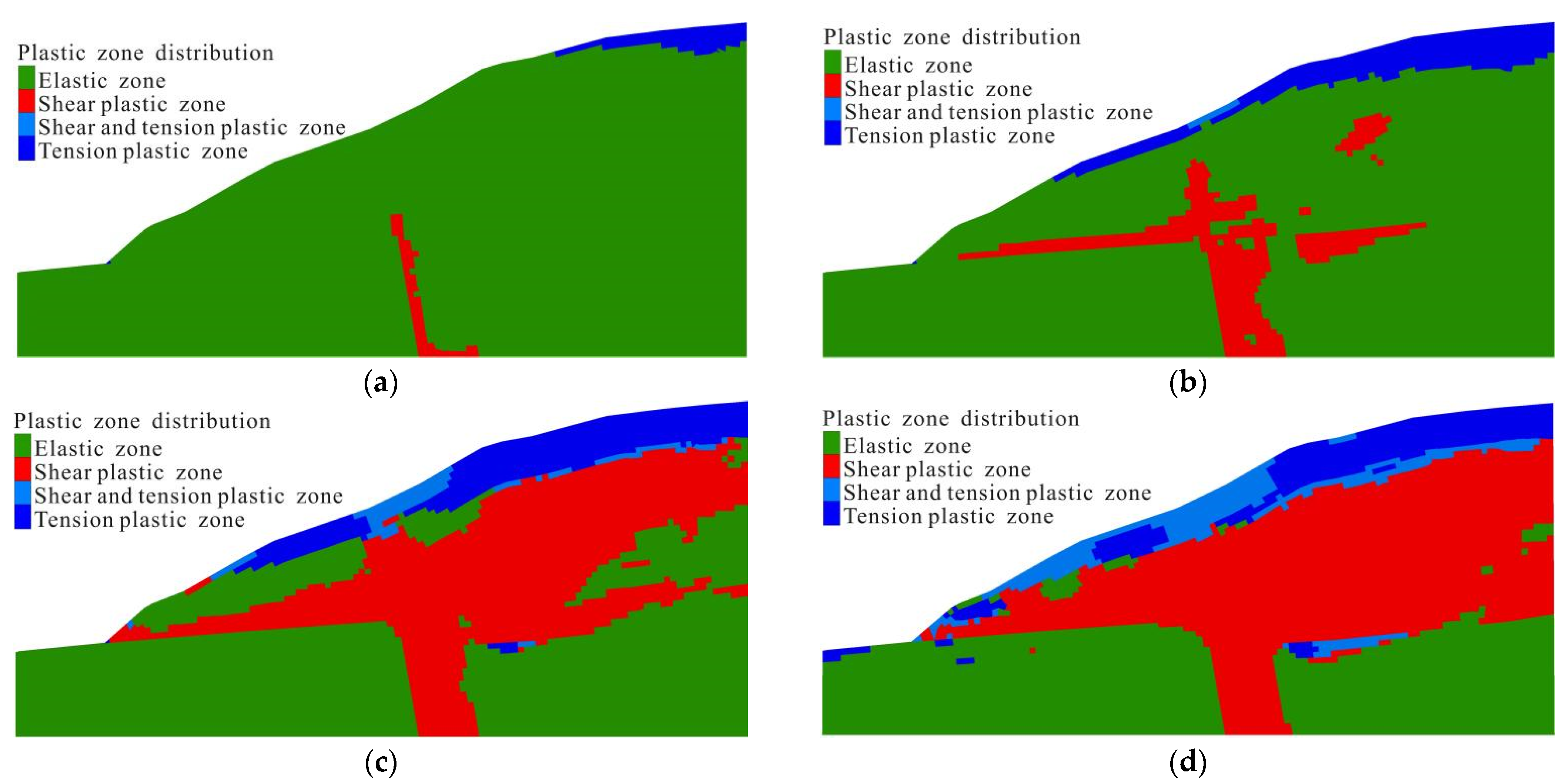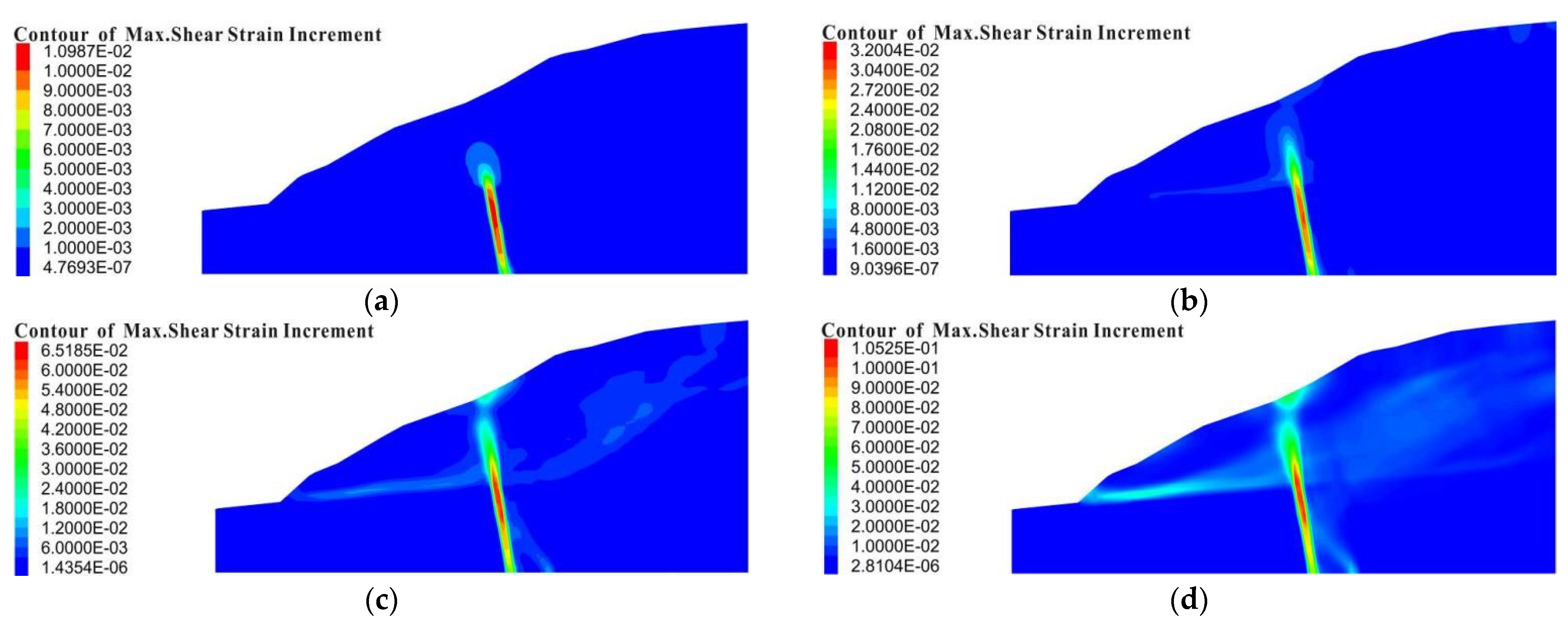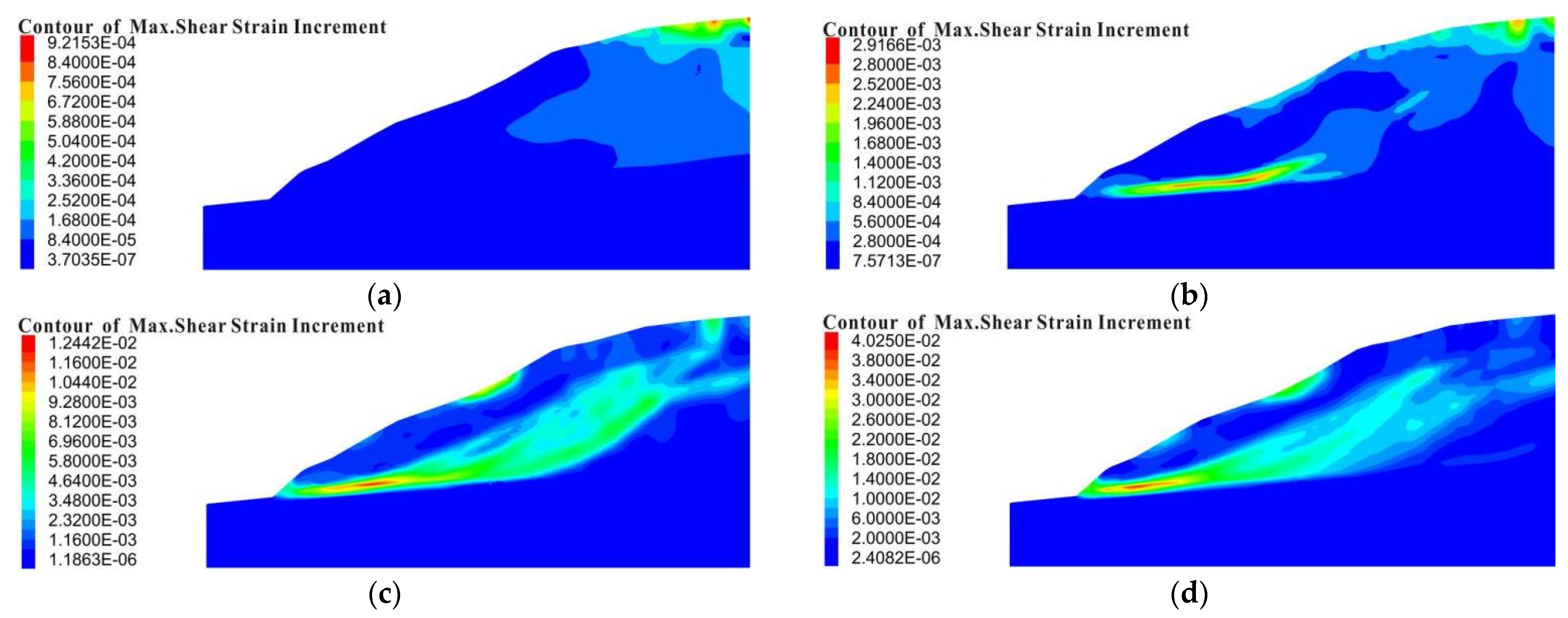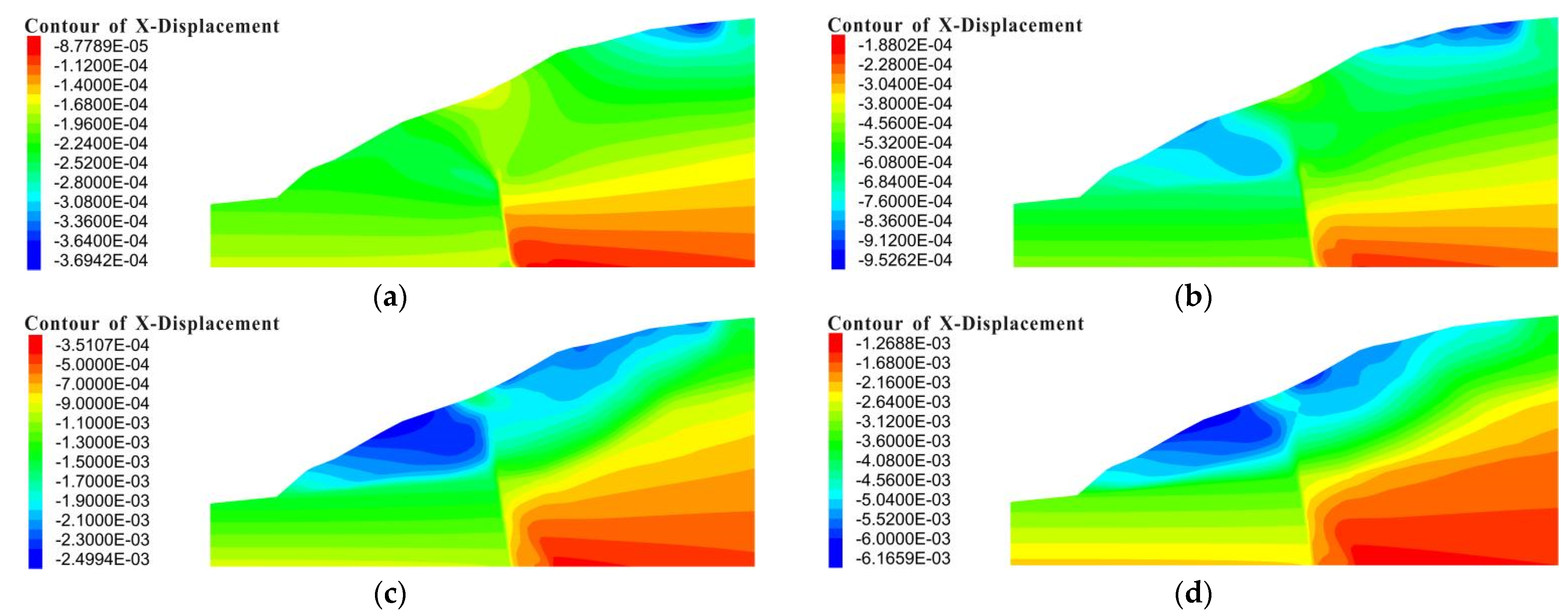1. Introduction
Western China has complex geological conditions, with active tectonics and frequent seismic activities. Between 1949 and 2009, a total of 1679 earthquakes with magnitudes greater than 5.0 occurred in China, of which 1547 (92.14%) occurred in Western China [
1]. Loess is distributed widely in this region, with a distribution area of 633,500 km
2 and a complex and diverse genetic type; it accounts for 6.63% of the total land area in the entire country [
2]. The instability of loess slopes during earthquakes is well-researched because such instability often results in serious landslide disasters, which threaten the personal and property-related safety of the residents in the surrounding areas. For example, in 1718, 59 loess landslides with ranges greater than 500 m were induced by the Gansu Tongwei earthquake (Ms = 7.5). In 1920, a loess landslide with an area of over 4000 km
2 was triggered by the Haiyuan earthquake (Ms = 8.5). More than 150 loess landslides were induced by the Gansu Yongdeng earthquake (Ms = 5.8) in 1995 [
3] and on 22 July 2013, an earthquake (Ms = 6.6) in Min-Zhang County, Gansu Province, resulted in more than 600 loess landslides [
4,
5]. The occurrence of these earthquake-induced loess landslides is related to the existence of active fault zones, which clearly affect the distribution and development of earthquake-induced landslides in western China [
6].
Many studies have been carried out on the dynamic response and stability of slopes during earthquakes. The theory of sliding liquefaction has been proposed by Terzaghi et al., Sladen et al., and Lade [
7,
8,
9], who argue that liquefaction occurs in the sliding body under the action of forced vibration. Through dynamic triaxial liquefaction tests of loess from the central United States, loess liquefaction under cyclic dynamic loadings and seismic liquefaction slip of the loess layer were rigorously analysed by Puri, Sandoval-Shannon, Ishihara, Prakash, and Guo [
10,
11,
12,
13,
14]. The finite slip displacement method was proposed by Newmark [
15], which provided a new idea for the quantitative evaluation of slope dynamic stability. It was subsequently confirmed that stability evaluation using this method is reliable [
16,
17], and it was developed and improved by Sarma, Franklin, and Constantinou et al. [
18,
19,
20]. Bo et al. [
21] proposed an efficient finite element method, based on the quasi-static method, with which to evaluate the dynamic stability of soil slopes. Davis [
22] placed monitors in Nevada, USA, and found that vibration at the high point of the terrain was stronger than that on a relatively flat area. Furthermore, investigations found that the obvious topographic amplification effect caused by the 1989 San Francisco and 1994 Pacific Northridge earthquakes was the cause of several landslides [
23,
24]. The factors influencing slope stability during earthquakes and the slope instability mechanism were summarised by Qi et al. [
25], indicating that seismic inertia force and the building up of excess-static pore pressure are two reasons for the induction of the instability of a slope. The characteristics of the distribution of earthquake-induced landslides in loess areas and the main factors affecting such landslides were analysed by Zhang et al. [
26], by building a classification model based on the AHP method and indicating that the classification model is appropriate to the loess landslide zoning.
Zhang et al. [
27] carried out several ring shear tests on loess soil formed by the landslide induced by the Haiyuan earthquake to study the formation mechanism of earthquake-induced loess landslides, and they indicated that the pore pressure was built-up gradually before the failure, and after that, that large pore pressure was quickly generated due to the failure of the loess soil structure. The deformation and failure characteristics of large-scale loess landslides triggered by the 1949 Khait earthquake in Tajikistan were studied by Evans et al. [
28], who indicated that the Khait landslide involved the transformation of an earthquake-triggered rockslide into a very rapid flow by the entrainment of saturated loess into its movement. Wang et al. [
29] discussed the types and basic features of loess landslides induced by the Tianshui (1654), Tongwei (1718), and Haiyuan (1920) earthquakes, dividing the landslides in the valley city of the loess area into three types: homogeneous loess landslide, loess interface landslide, and loess–mudstone cutting layer landslide. Through a series of undrained triaxial compression and ring shear tests, Wang et al. [
30] suggested that saturated loess was susceptible to liquefaction damage, and air trapped in the loess was not the main causal factor for large-scale landslides during the 1920 Haiyuan earthquake. Through dynamic triaxial analyses and finite element numerical calculations, the probability of liquefaction and dynamic response characteristics of several loess landslides induced by the Minxian earthquake were analysed by Wu et al. [
31], who indicated that continuous heavy rain before the earthquake induced an increasing moisture content and shear strength reduction in the surface loess layer of the slope. Coupled with the strong quake, tensile stress and liquefaction occurred in the surface soil layer. The dynamic response rules of loess-mudstone slopes (LMSs) with fault zones of gentle and steep dip angles using shaking table tests were studied by Huang et al. and Jia et al. [
6,
32], who revealed that the seismic response and failure mode of LMSs were controlled by bedding fault zones (BFZ), indicating that the fracture distribution on the slope surface is related to the dip angle of the fault zone; the smaller the dip angle, the worse the dynamic stability. To investigate the seismic response of a bedding rock slope, a time-frequency joint analysis method was proposed by Song et al. [
33], which showed that the topographic and geological conditions have great impacts on the dynamic response characteristics of the slope. Novel recurrent neural networks were applied to predict the slope dynamic response by Huang et al. [
34], which showed that recurrent neural networks perform well in the analysis of the seismic dynamic response of a slope and provide better predictions than the multi-layer perceptron network. To investigate the effect of both horizontal pulse-like motion and vertical components on the dynamic response of a slope, a shaking table test was performed by Zhu et al. [
35] which indicated that a vertical component has limited effect on a seismic response when the horizontal component is a pulse-like ground motion, but that it can greatly enhance the seismic response of a slope under ordinary horizontal motion.
These studies mainly focused on vibration sliding liquefaction, dynamic stability evaluation, dynamic instability mechanisms, and the dynamic response characteristics of general slopes. Only a small number of studies have considered the influence of BFZ on the dynamic response of slopes. Moreover, few reports exist on the seismic response rules, deformation, and failure mechanism, along with the failure process and the mode of the LMSs with high anti-dip angle fault zones (HADAFZs) during earthquakes. Therefore, based on typical loess–mudstone landslides in the Tianshui area of Gansu Province, China, a general LMS model with an HADAFZ was constructed in this study to explore the rules of seismic response and failure for the model slope during earthquakes using a large-scale shaking table test and numerical simulation.
